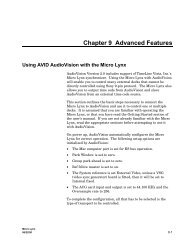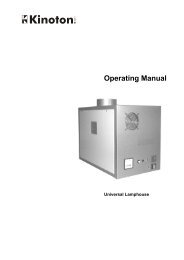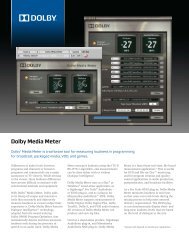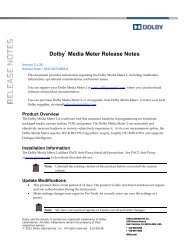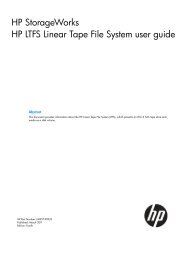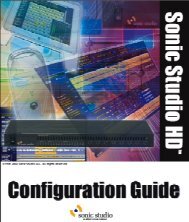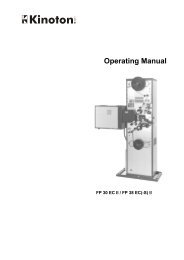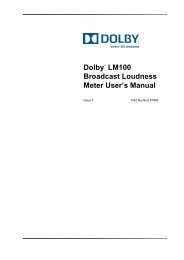Cable Reference Guide - Audio Intervisual Design, Inc.
Cable Reference Guide - Audio Intervisual Design, Inc.
Cable Reference Guide - Audio Intervisual Design, Inc.
- No tags were found...
Create successful ePaper yourself
Turn your PDF publications into a flip-book with our unique Google optimized e-Paper software.
AppendixFigure Appendix A-5. Two Sine Wave Signals in PhaseJust as pilot tone on one tape machine is made to match the referencesource, it can also be made to match pilot tone on a secondmaster tape machine. Thus, pilot tone can be used to synchronizethe speed of the two tape machines.However, There Is aProblem:One sine wave looks exactly like another. While the slavemachine can phase lock with the master, it has no way of knowingwhether the master is playing the first verse or the third chorus orif the master is three-and-a-half seconds into a scene or right atthe beginning. As a tool for synchronization, pilot tone is severelylimited. The same is true for other speed only sync codes such asFrequency Shift Key (FSK) and Din Sync.To work, master and slave must be carefully lined up at the beginningof playback and there’s no way to run the machinesaccurately to the middle of the program material since the slavenever knows where the master is, only how fast it is playing.SMPTE: What You Can Do with a Speed and Position <strong>Reference</strong>This is where SMPTE time code enters the picture. As we said,SMPTE indicates not only tape speed, but also tape position.SMPTE time code is a complex digital signal, equivalent to thesimple, analog pilot tone signal with a unique number assigned toeach cycle of the sine wave.Time code is recorded onto tape as an audible signal − a rapid-fireseries of blips. These blips are “read” by a microprocessor as aunique number: an address, consisting of separate numbers forhours, minutes, seconds and fractions of a second, called frames.So, if you have a gunshot at the climactic scene of a suspensemelodrama, SMPTE tells you exactly where the gunshot “lives;”what its address or location is on tape. SMPTE can say, “Thisgunshot occurs one hour, 31 minutes, 12 seconds and 19 framesinto the film.” This means you can shuttle to the exact spot ontape where that gunshot occurs, and replace the existing blastwith a more convincing sample; one the sound effects engineer justacquired.Think of what that means: the master machine can findANYTHING on a tape, and all slave machines will chase the masterto that very same spot. At this point, we’re a long way from justlocking one faceless sine wave with another and rolling from thetop. We’ve moved into the realm of position accuracy.Micro LynxA-8 06/22/00




